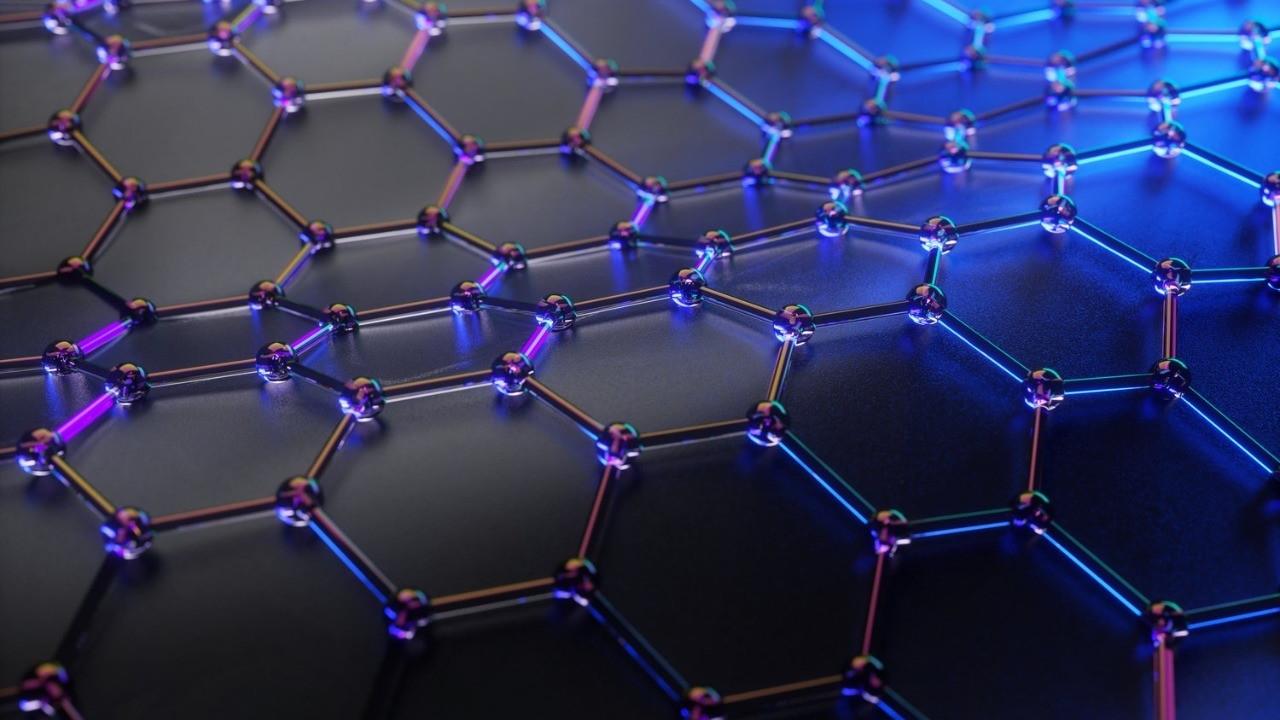Science News
& Faculty Articles
Measuring the Curvature of Space-time Using Time Dilation at Atomic Scale

By physicist Dr. Inés Urdaneta and biophysicist William Brown, research scientists at Resonance Science Foundation
Although quantum mechanics— the physics governing the atomic scale— and general relativity— the physics governing the cosmological scale— are still viewed as disparate regimes within the Standard Model (Haramein's holographic quantum gravitational solution has not reached wide-spread mainstream appeal as of yet), experiments on the quantum scale are reaching the capability of measuring relativistic effects, therefore connecting in practice, what remains disconnected in theory.
Such is the case of the recently observed gravitational Aharonov-Bohm effect—a quantum probe for gravity. In the electromagnetic version of the Aharonov-Bohm effect (in which the highly nonlocal quantum effect was first predicted) an electrically charged particle is affected by an electromagnetic potential, despite being confined to a region in which both the...
CODATA Proton Charge Radius; The History Of This Fundamental Measurement

Haramein’s holographic solution accurately predicted the mass and radius of the proton in 2012 [2, 3], resulting in a radius 4% smaller than the Standard Model and experiments gave at the time. This prediction that does not utilize adjusting parameters, was later confirmed at the Paul Scherrer Institute utilizing muons in a proton accelerator. Further experiments utilizing electrons confirmed the radius in 2017-2018. The value of the proton RMS charge radius has since been validated by the adjusted 2018 CODATA value, which is the standard for all fundamental physical constants.
By Dr. Inés Urdaneta / Physicist at Resonance Science Foundation
It’s been almost two years since the charge radius of the proton was finally confirmed experimentally by a September 2019 study from Eric Hessels [1], of York University in Canada, and his colleagues.
In his paper entitled Quantum gravity and the holographic mass (published in 2013, though the work was sent to...
Prediction of Giant Vortex in Liquid Light!

Article by Dr. Inés Urdaneta, Physicist, Resonance Science Foundation Research Scientist
Photo by Kenji Croman
Just as particles at the very small scale are governed by the strange laws of the quantum world, light can behave weird when placed in the proper conditions. The most intriguing is the case of liquid light that we had addressed in a former article entitled “Liquid light at room temperature”, where light interacts with matter, or more precisely, photons interact with electron-hole pairs – called excitons – in a semiconductor. These excitons impose a dipole moment, which combined with the dipole of the electromagnetic field, couples strongly the excitons and the photons. The result is a polariton, considered a quasiparticle, composed of half-light and half matter which behaves as a Bose Einstein condensate or superfluid even at room temperature. A superfluid behaves like a fluid with zero viscosity. Zero viscosity is equivalent to perpetual...
New Machine Learning Method Raises Questions on the Nature of Reality… Again

By Dr. Inés Urdaneta / Physicist at Resonance Science Foundation
Machine learning and artificial intelligence are increasingly taking the stage, with huge philosophical implications. We have been following this issue in our RSF science blog, first through the article Between the Holographic Approach and Data Science where we addressed the potential of trained artificial neural networks to replace our scientific models, and the possibility of reality being a numerical simulation was discussed. Somehow we had anticipated the work from Vitaly Vanchurin, from the University of Minnesota Duluth, proposing that we live in a neural network and affirming that only through neural networks we could find the theory of everything and grand unification theory. So, our second article entitled Is the universe a Neural network? addressed this later possibility.
Today it was published in Phys.org an article entitled New machine learning method raises question on nature of science which...
More Evidence of Collective Behavior at Cosmological Scale!

Image source here.
By Dr. Inés Urdaneta / Physicist at Resonance Science Foundation
Just a couple of years ago, astronomers and astrophysicists were baffled by the observation of a synchronized behavior in galaxies, which can not be explained by their individual gravitational fields. Such was the case of a study lead by Joon Hyeop Lee, an astronomer at the Korea Astronomy and Space Science Institute, and published in The Astrophysical Journal in October 2018, reporting hundreds of galaxies rotating in sync with the motions of galaxies that were tens of millions of light years away.
Given the fact that from our known theories, in principle it would be impossible that galaxies separated by megaparsecs (millions of light years) could directly interact with each other, their interaction happens across distances that are too large to be explained by their gravitational force. It is then speculated that some unacknowledged force must be acting.
This discovery came after the...
Graphene Proves That Brownian Motion Can Be A Source of Energy!

By Dr. Inés Urdaneta / Physicist at Resonance Science Foundation
Graphene, one of the most important nanomaterials developed so far, continues to surprise the scientific community. This time, thanks to the extraordinary phenomena found by a group of physicists from the University of Arkansas. We are talking specifically about the capacity to use the thermal motion of atoms in graphene as a source of energy!
In this recent work, published in Physical Review E under the title Fluctuation-induced current from freestanding graphene, the team of researchers have successfully developed a circuit capable of capturing graphene's thermal motion and converting it into an electrical current.
As it is said in this article: "The idea of harvesting energy from graphene is controversial because it refutes physicist Richard Feynman's well-known assertion that the thermal motion of atoms, known as Brownian motion, cannot do work. Thibado's team found that at room...
First Virtual Reality Simulation of a Supermassive Black Hole

Image from original paper: it depicts the virtual simulation of Sag. A* for an observer placed very close to it.
Article by: Dr. Inés Urdaneta, Physicist at Resonance Science Foundation
As mentioned in a previous article, the Event Horizon Telescope is an international collaboration aiming to obtain the first real image of the event horizon (EH) of a black hole using a set of antennas scattered around the globe. EHT has been monitoring and collecting data from the supermassive Black Hole (SMBH) at the core of the Milky Way galaxy, known as Sagittarius A*, and results are expected very soon, probably 2019.
Now, for the first time, the virtual reality simulation of Sagittarius A* has been achieved by a group of scientists at Radbound University and collaborators from the Institute of theoretical Physics, in Germany, and the Mullard Space Science laboratory, at the University College London. In their article “Observing Supermassive Black Holes in virtual...
A Virtual Telescope the Size of the Earth!

By Dr. Inés Urdaneta / Physicist at Resonance Science Foundation
Up to 2016, the biggest telescopes were composed of an array of antennas located in a particular site, like the one at Atacama Desert, in Chile. called ALMA (Atacama Large Millimeter/ Submillimeter Array). Its construction dates from 2004 and consists of sixty-six 8-to-12-meter diameter antennas aiming to receive millimeter wavelengths. Among others things, ALMA is capable of performing deep space detections, what allows to obtain information about the first stars and galaxies that emerged billions of years ago at huge distances from us. Due to the universe expansion, most of these objects’ emissions have stretched out to the millimeter and submillimeter wavelengths.
Using a technique known as interferometry – or interference pattern between the signals received by each antenna, to recompose a complete unique image- the 66 antennas at ALMA work together as though they were a single...
How Many Dimensions? A Deeper Look Into Outer Space

By Dr. Inés Urdaneta / Physicist at Resonance Science Foundation
The detection of gravitational waves (GW) was a remarkable breakthrough for many reasons, one of which is the possibility of testing or disproving different theories describing gravity. Some of these new theories require the existence of extra dimensions in addition to the standard 3D+1 of general relativity (GR). These additional dimensions are mainly required to provide an alternative route in the dark matter and energy hypothesis, since gravity would leak into these additional dimensions, diminishing the amplitude of the observed GW signal. This would produce an error in the inferred distance to the gravitational wave source predicted by GR. If true, it could account for the yet undetectable dark matter and energy at the cost of challenging GR theory, since the existence of dark matter and dark energy depends on the assumption that GR is valid at all scales and distances.
The collision of two neutron stars...



